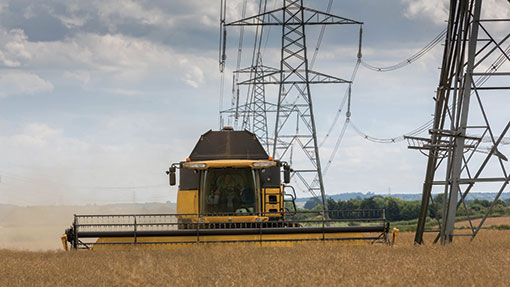A quick guide to safe working for farm contractors

Safety never takes a day off. It’s a corny phrase, but one that is resoundingly true and it should be in the back of every machinery operator’s mind the moment they climb into a tractor.
The Provision and Use of Work Equipment Regulations 1998 (Puwer) applies to any equipment and machinery used at work. What this means, says the Health and Safety Executive (HSE), is that equipment must be suitable for the task, properly maintained and guarded, and that adequate training and information about the equipment is available to employees.
Many incidents occur when a machine has been left running, not stopped fully or restarted while someone was in contact with the moving parts.
These may have been avoided by simply following the Safe Stop procedure, says the HSE, which is:
1. Handbrake on
2. Controls in neutral
3. Engine off
4. Key out
There are three main areas to focus on when looking at how to make your business safer where machinery is involved, says the HSE.
1. Safe purchase
Fleece-winding fatalities
A fleece-winding machine was being used to wind up lengths of rope in a polytunnel when a tractor driver left the cab without turning the engine off. Several hours later, the bodies of two farmworkers were found entangled between the rope and a rotating shaft.
When hiring or purchasing machinery, these are the key things you should check:
- The machine is CE-marked and supplied with a certificate of conformity
- The machine is fitted with rollover protection
- The machine will clear any overhead power lines
- Whether operators need training to use the machinery
- When buying second-hand equipment, check that it complies with Puwer and that it has guards in place. If not, you are responsible to bring it to a safe standard and replace or repair guards before using it.
2. Safe use
Vacuum tanker accident
A 23-year-old farmer got off his tractor to check the vacuum tanker he was using was working, as no water was being drawn through.
As he leaned over the tractor to put his hand against the pump exhaust, the pto shaft on the machine caught his safety vest, ripping his shirt, jumper and left arm completely off. Unfortunately, surgeons could not save his arm.
Before using a machine, you should check it is suitable for the job, safe to use and has been set up correctly. Equipment should be inspected regularly for any signs of weakness or breakages and a record kept of all inspections.
- Keep guards in place
- Switch machinery off when not in use and remove key
- Give training on how to work the equipment efficiently and safely.
Pto shafts should be guarded at all times and these guards need to be manufactured to a recognised standard. They also need to be the correct length and size for the shaft and should not rotate. Slurry tankers, or any piece of kit under pressure, can burst open violently. There are simple steps to take to minimise the chance of this happening, says the HSE:
- Know the safe working pressures and temperatures for the equipment
- Fit safety valves to relieve excess pressure
- Pressure-test pipes and tanks hydraulically rather than with air
- Use a tyre cage when inflating tyres
- Never weld or heat wheel rims unless you have removed tyres
-
3. Safe maintenance
Loader crushing death
A 55-year-old farm worker was carrying out maintenance on a loader. He had chocked the back wheels and rested the loader arm on a wall. After disconnecting a number of pipes, the unpropped loader arm pushed the machine backwards and crushed him underneath.
Before starting any maintenance work, make sure the machine or piece of equipment is safe to work on by following the Safe Stop procedure. Then:
- Chock the wheels and apply the brakes
- Disconnect the battery before starting work
- Prop raised bodies properly and do not rely on hydraulic systems alone
- Use axle stands and never work under vehicles supported by jacks alone
- Wear the right protective clothing and equipment where necessary
- Tidy workshops are safer workshops. Also, see how you can improve conditions by looking at lighting and ventilation options.

